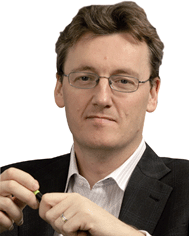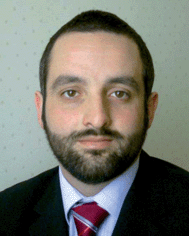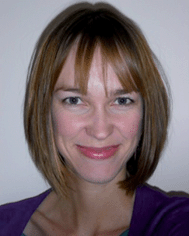Chemical Science - the best new journal
Abstract
Welcome to the first issue of 2012. In this Editorial we review an exciting 2011 and look forward to a critical 12 months for Chemical Science.
It is over three years since the idea of launching a new RSC flagship journal started to gather momentum. The proposal was as a result of international feedback, namely that the RSC should publish a journal that could compete for the very best research in chemistry. As we move into 2012, with Chemical Science thriving, we are delighted with what we have achieved but know it is still early days. The Editorial team (Fig. 1) remain committed to the original goal of ensuring Chemical Science becomes a leading journal for the publication of research of exceptional significance.
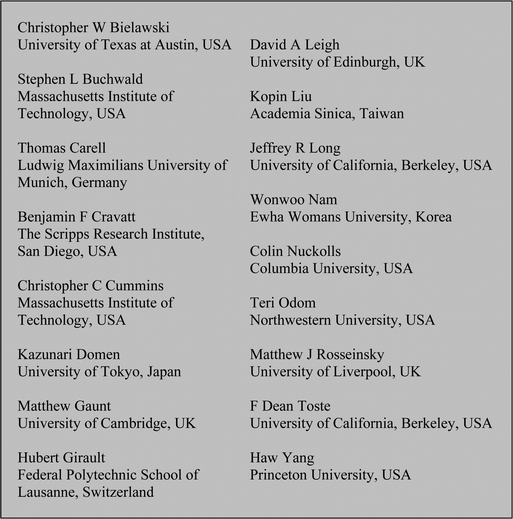 | ||
| Fig. 1 Chemical Science Editorial Board | ||
So what have we achieved in 2011 you might ask? Here are some of the highlights that we think merit a mention…
The Award
Everyone likes to win awards and in publishing we are no different. 2011 was a very special year for Chemical Science as we were named the winner of the prestigious ALPSP (Association of Learned and Professional Society Publishers) award for best new journal. In a competition that was open to all new journals, up to three years from launch, Chemical Science fought off tough opposition from over 30 entries, including Nature Communications, to steal the show. Acting RSC Managing Director, James Milne (Fig. 2), was on hand to collect the award on behalf of RSC Publishing.|
‘launched to present high quality cutting edge research across the chemical sciences, it has achieved swift success. There are very close links with the community and the journal is clearly defined by the science and the user.’
ALPSP Award citation |
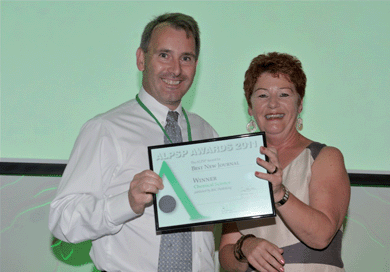 | ||
| Fig. 2 Acting Managing Director, James Milne collects the ALPSP Best New Journal Award. | ||
We would like to thank everyone who has helped contribute to the journal's ever growing success.
The Quality
To ensure the future success of Chemical Science our quality goals remain unchanged. The Associate Editors have been working hard to enforce even higher standards; only the very best research made it into an issue in 2011 and this will continue in 2012. To ensure we offer the fastest service to authors and do not overwork our dedicated referees, we will continue to triage science that is not of suitable quality or out of the journal scope.|
I am keen to publish my work in Chemical Science as the quality is very high.
Professor Shunichi Fukuzumi, Osaka University |
Over the last 12 months, high quality science has appeared in Chemical Science in abundance. It is not possible to cover all the articles in this Editorial but one in particular has made a significant impression. In April we published an Edge article by Professor Christopher Vanderwal and David Martin (University of California, Irvine) entitled ‘A synthesis of strychnine by a longest linear sequence of six steps’ (DOI: 10.1039/C1SC00009H) (Fig. 3). This has been the most read article in Chemical Science in 2011 with double the number of downloads compared to the article ranked second. It was no surprise, therefore, that the synthesis was widely covered in the broader scientific press.
 | ||
| Fig. 3 Graphical Abstract from ‘A synthesis of strychnine by a longest linear sequence of six steps’ by Christopher Vanderwal and David Martin. | ||
The Editors
In 2011, our team of Associate Editors worked even harder to deal with your articles as quickly and efficiently as possible because we realise that high quality customer service is important to any successful new journal. Through their dedication to the role, the average time from receipt to publication is 65 days. Coupled with the recent launch of ‘Accepted Manuscripts’, Chemical Science is certainly one of the fastest journals in the general chemistry arena.In response to the growing number of submissions and specific feedback from the scientific community, two new Associate Editor appointments were made early in 2011. We were delighted to welcome Professor Christopher Bielawski (University of Texas at Austin) to handle submissions in the field of polymer science, and also Professor Wonwoo Nam (Ehwa Woman's University, Korea) to handle submissions in the field of bioinorganic chemistry. Both have been excellent additions to the Editorial Board, bringing a wealth of expertise in their respective research areas.
The Growth
Chemical Science has continued its remarkable growth in 2011, with a 300% increase in submissions observed since the journal opened in January 2010. These articles originated in over 25 countries and this increasing popularity is a clear sign that the profile of the journal continues to rise.We are delighted with the balanced international feel of the journal in 2011 (Fig. 4). Chemical Science is now established as one of the choice premier journals for leading researchers from the USA, UK, China, Germany and Japan. Future activities will capitalise and build on these successes while also embracing opportunities that arise in other key countries.
 | ||
| Fig. 4 Geographical origin of articles published in Chemical Science in 2011. | ||
The Visibility
The profile of the journal continues to rise and we are delighted with all the positive feedback we have received from both readers and authors alike. An extensive marketing campaign has continued throughout 2011 and we have sponsored a number of events at leading conferences. Plans are already in place for a similar level of activity in 2012. In addition, both the Managing Editor and Deputy Editor will be travelling throughout 2012 showcasing the journal at numerous conferences around the world.We were delighted in 2011 to hold the first one day Chemical Science Symposium (Figure 5). The event took place in Nanjing, China, covering supramolecular chemistry and organic materials. A host of international researchers, complemented by local speakers, spoke over the course of the day. The 100 strong audience were inspired by a wide range of high quality science, all of which was focused at the interface between chemistry and biology or chemistry and materials. We would like to thank the speakers for giving up their time to present in Nanjing and also our local hosts for helping to stage the event.
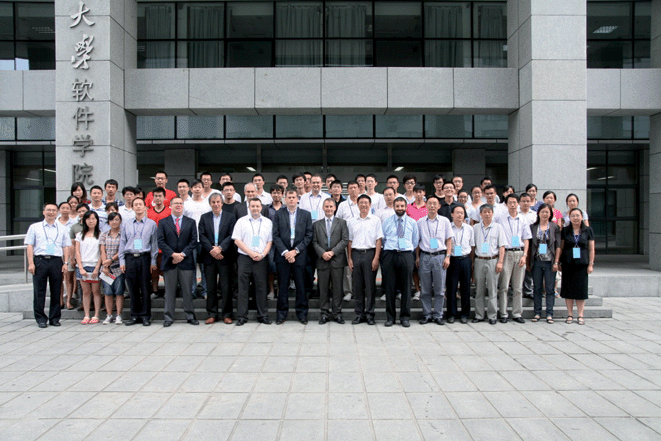 | ||
| Fig. 5 The participants of the first international Chemical Science Symposium. | ||
The ISACS conferences
The International Symposia on Advancing the Chemical Sciences also continued in 2011 with ISACS 4, 5 and 6 held at MIT, Boston; University of Manchester; and Peking University, Beijing. As in 2010, a world-class line-up of 16 or so plenary speakers were invited to each event. In a first for the symposia series, these plenary lectures were accompanied by shorter presentations selected by the organising committee following oral abstract submissions. Additionally at ISACS 5, delegates saw the 2009 Nobel Laureates Professors Venkatraman Ramakrishnan and Thomas Steitz open the conference and receive their Honorary Fellowships from the RSC. The feedback from all three conferences was extremely positive and we were delighted with the success of the events in only their second year since launch.|
“There was unanimous agreement [amongst attendees] that this was one of the best conferences any of us have ever attended in the field. It was a spectacular success.”
James K McCusker, Professor of Chemistry and Associate Chair for Research at Michigan State University |
Plans are well underway for the 2012 symposia. The international nature of the series is very important and hence is reflected in the next three venues, now confirmed as Edinburgh, UK, Toronto, Canada, and Xiamen, China. The topics for two of the meetings will revert back to those covered in 2010 with ‘Challenges in Organic Chemistry & Chemical Biology’ and also ‘Challenges in Inorganic & Materials Chemistry’ on the menu. New to the ISACS scientific programme in 2012 is ‘Challenges in Nanoscience’, a very topical and interdisciplinary area of research and ideal, therefore, for the style of the conference. Keep up-to-date with the latest ISACS information via the new Twitter feed (http://twitter.com/ISACSconference), the website (www.rsc.org/isacs) or sign up to the ISACS newsletter.
Read all about it
You can keep up to date with all the latest news and developments from Chemical Science in a variety of ways. Follow us on Twitter (http://twitter.com/chemicalscience) and the Chemical Science Blog (http://blogs.rsc.org/sc) or sign up for e-alerts or the Chemical Science newsletter (http://www.rsc.org/alerts)The Future
So what does the future hold for Chemical Science? As we move into our third year, we look forward to receiving our first partial Impact Factor. This is a significant milestone as we will get a feel for how well the journal is being read and cited since launch. Early indications are that we will certainly be challenging the top general chemistry journals in the field, after only 2 years. All this has been achieved by our commitment to publish high quality primary research complemented by a small number of thought provoking and insightful Perspectives and Mini-reviews.We would like to close by thanking the most important people who have made Chemical Science so successful in such a short period of time. To our authors, thank you for publishing with us, we hope you were impressed with the service and will come back with future submissions of exceptional quality. To our referees, for delivering comments to our Associate Editors in a timely manner to ensure that the right informed decisions are made. Finally, to our Associate Editors for their commitment and dedication in maintaining the quality while delivering excellent customer service in a timely manner.
If you have any comments about Chemical Science we would be delighted to hear from you. These should be sent to ChemicalScience-RSC@rsc.org.
Editor-in-Chief
Managing Editor
Deputy Editor
Senior Publishing Editor
RSC Publishing growth and successes
Journals from RSC Publishing are delivering impressive results on Impact Factors, growth in quality content and international visibility and influence. The 2010 Journal Citation Reports® proved that our quality is better than ever, and that is thanks to our authors and referees. Of the top 20 journals in the multidisciplinary chemistry category, 25% are from RSC Publishing. Plus 83% of our journals listed in this year's report have an IF above 3.The number of articles published in our journals has almost doubled in just two years – and our share of the total has also nearly doubled in that time. More titles have recently joined our portfolio: RSC Advances and Catalysis Science & Technology.
So more and more authors—from 70+ countries in 2011—are trusting us to ensure their research is communicated to the global community. Our Editorial and Advisory Boards are international, and our publishing operation is supported by offices in USA, China, India and Japan. Plus our content is downloaded by growing numbers of readers in virtually every country in the world.
These facts demonstrate that RSC journals are increasingly valued as a key resource for the very best research. www.rsc.org/journals
Books delivering the latest research advances, information, opinions and perspectives in modern science, confirms our reputation as one of the fastest and most dynamic publishers in the world.
In an age where content is key, we understand the importance of your online chemical science resource. The RSC eBook Collection now holds more than 1,000 books, equating to over 25,000 chapters, and spanning more than 40 years. The publication of our 1000th eBook in 2011 was a celebratory milestone.
We continue to provide expert, interdisciplinary chemical science books: over 100 new print titles are planned for 2012 alongside the launch of several new series including:
• Food and Nutritional Components in Focus
• New Developments in Mass Spectrometry
• New Developments in NMR
• RSC Smart Materials
Our ability to deliver fast, accurate information to our customers was rewarded by the BIC Basic Award, an accolade held by few publishers. www.rsc.org/books
RSC Publishing Platform
Access one million journal articles and book chapters in one simple integrated search.The RSC Publishing Platform provides the most valued interface and features that connect you with the highest quality scientific research. With one single search box, students, academics, researchers, scientists and professionals can easily access our books, journals and databases. www.rsc.org/platform
To access content on the go, download our RSC Mobile app for your electronic device.
Free Online Access
Free online access is available to all our newest journals, and much more – all you need to do is register for an RSC Publishing Personal Account. Once logged in, you will be able to access all our free content including:• All content of our newest journals for the first two volumes
• Any articles that are part of a special free access promotion (e.g. ‘hot’ papers, web theme issues, etc)
• A sample chapter from each book in the RSC eBook Collection
With your username and password you can access free content any time, any place – all you need is internet access. You can also save searches and favourite articles. Register now at www.rsc.org/personalregistration
If your institution/organisation is a current customer or on a free trial with IP registered addresses, you will be able to access all free content automatically, if authenticated. To request free access for your institution/organisation, go to www.rsc.org/freeaccess.
ChemSpider: the free chemical database
www.chemspider.com gives you the most comprehensive view of freely available chemical data from a single online search.Search: over 26 million structures from 400+ sources
Discover: related information from RSC publications, Wikipedia, Google Scholar & PubMed
Share: add and curate data
Access ChemSpider anytime, anyplace, anywhere with the free ChemSpider mobile app, www.rsc.org/ChemSpidermobile
ChemSpider SyntheticPages is a freely available interactive database of synthetic chemistry. It contains practical and reliable organic, organometallic and inorganic chemical syntheses, reactions and procedures deposited by synthetic chemists. Synthetic methods on the site are updated continuously by chemists working in academic and industrial research laboratories. ChemSpider SyntheticPages encourages submissions from graduate students, postdocs, industrialists and academics.
Discover ChemSpider SyntheticPages today: http://cssp.chemspider.com
RSC Conferences and Events 2012
The RSC organises a broad range of conferences and events to promote the advancement of the chemical sciences. Please visit the website for the most up to date listing: www.rsc.org/eventsThe major scientific meetings planned for 2012 include:
Challenges in Organic Chemistry and Chemical Biology (ISACS7)
12–15 June 2012, Edinburgh, UK
Molecular Reaction Dynamics in Gases, Liquids and Interfaces (Faraday Discussion 157)
25–27 June 2012, Assisi, Italy
Challenges in Inorganic and Materials Chemistry (ISACS8)
19–22 July 2012, Toronto, Canada
Challenges in Nanoscience (ISACS9)
31 August - 3 September 2012, Xiamen, China
21 st IUPAC International Conference on Physical Organic Chemistry (ICPOC 21)
9–13 September 2012, Durham, UK
Inorganic Photophysics and Photochemistry – Fundamentals and Applications (Dalton Discussion 13)
10–12 September 2012, Sheffield, UK
Lipids and Membrane Biophysics (Faraday Discussion 161)
11–13 September 2012, London, UK
Directing Biosynthesis III (DBIII)
19–21 September 2012, Nottingham, UK
| This journal is © The Royal Society of Chemistry 2012 |

